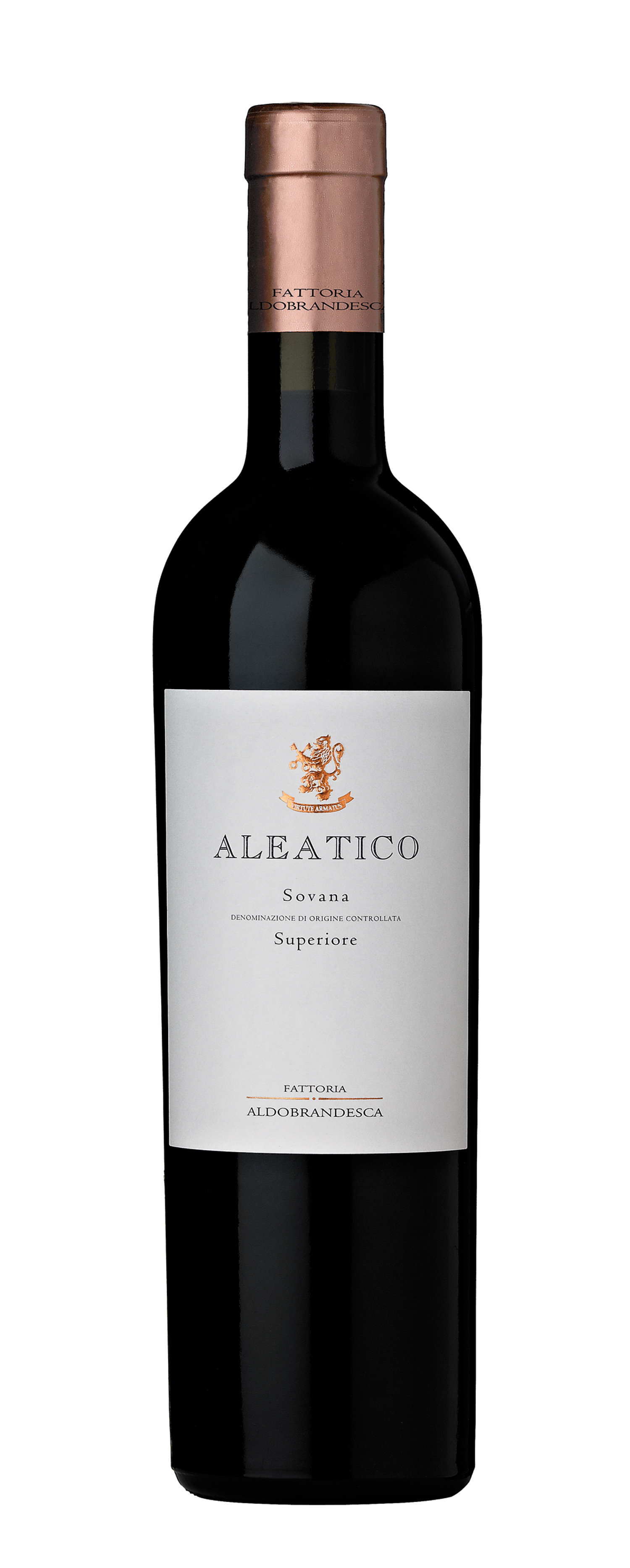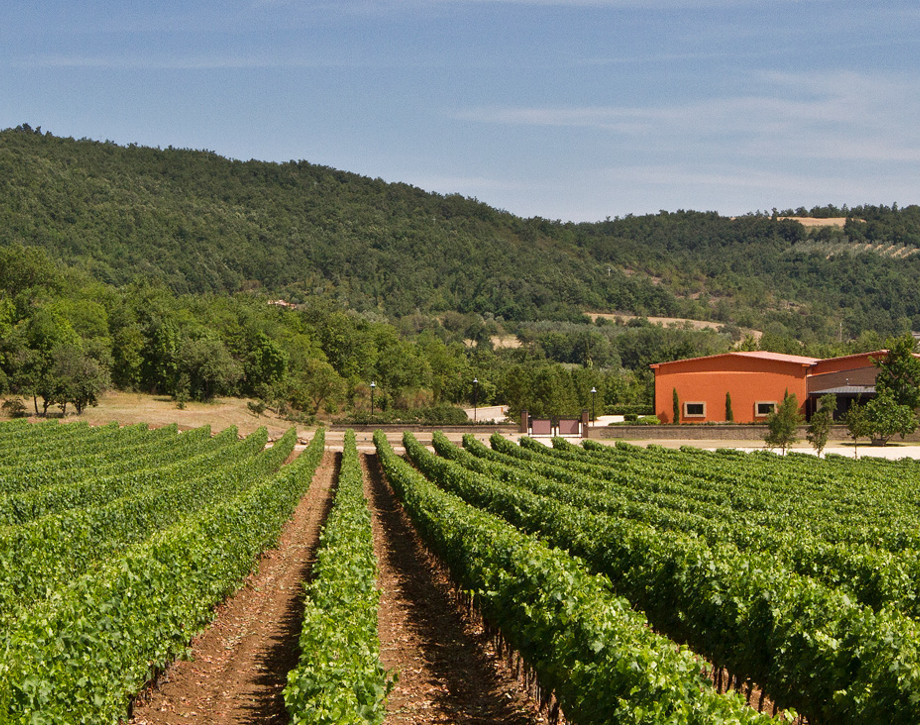Aleatico

Climate
The winter of 2010 enjoyed a normal climate for the season with rather cold temperatures and frequent days of rainfall. Bud break took place took place, as is usually the case, during the first half of April. The rain and the unusually cool climate for the period which characterized the end of May and early June did not have a negative impact on fruit set, which took place in the customary period for the growing season, during the first week of June. The rainfall just cited provided the vines with excellent resources for the development of the vegetation, and the cool, dry summer led to a complete and perfect color change in the grapes. A warm and dry September favored the ripening of the grape bunches, which were strong, healthy, and sweetly perfumed by harvest time. Picking, which took place at the end of September in a period of positive weather, was gradual and targeted and brought perfect grapes to the cellars for the fermentation and aging to follow.
Vinification
The grapes, picked at perfect levels of ripeness, were divided into two parts: one was immediately fermented, the other placed for a month in special drying facilities, low in humidity and well ventilated, in order to obtain a greater concentration of aroma and structure. Fermentation procedures were the same for the two parts, nonetheless, once the grapes reached the cellars. After a very delicate pressing the grapes macerated for a week on their skins in order to extract their complex aromatic patrimony, their typical color, and their balanced and intense structure. The juice was then run off its skins and fermented at cool temperatures, 68° Fahrenheit (20° centigrade). Once the level of desired residual sugar was reached, the fermentation was blocked by means of a sudden lowering of the fermentation temperatures. The finished wine, at 10° alcohol, was then conserved at low temperatures until bottling.
Historical data
The Aldobrandesca farm is situated near the historic hamlet of Sovana in southern Tuscany. The first vintage to be produced was the 1997. This wine is distinguished by its personality, its drinking pleasure, and by the typical aromatic richness of its nose and palate.
Tasting Notes
The aromas of the wine feature intense notes of roses, tea, ripe plums, and strawberries. On the palate it is ample, rich, dense, and velvety with a finish and aftertaste dominated by the typical fruity and floral notes of the Aleatico grape.

The Wine
Aleatico, a very old grape variety and also the name of a traditional Tuscan sweet dessert wine, develops a unique varietal expression in this area that stands out for its strong identity and a soft, balanced palate. Part of the harvest is vinified immediately while the other part is left to air dry to concentrate aromas. The result is a pleasant expression of freshness and structure while preserving the richness of the variety’s typical floral and spicy aromas.

Climate
The winter of 2010 enjoyed a normal climate for the season with rather cold temperatures and frequent days of rainfall. Bud break took place took place, as is usually the case, during the first half of April. The rain and the unusually cool climate for the period which characterized the end of May and early June did not have a negative impact on fruit set, which took place in the customary period for the growing season, during the first week of June. The rainfall just cited provided the vines with excellent resources for the development of the vegetation, and the cool, dry summer led to a complete and perfect color change in the grapes. A warm and dry September favored the ripening of the grape bunches, which were strong, healthy, and sweetly perfumed by harvest time. Picking, which took place at the end of September in a period of positive weather, was gradual and targeted and brought perfect grapes to the cellars for the fermentation and aging to follow.
Vinification
The grapes, picked at perfect levels of ripeness, were divided into two parts: one was immediately fermented, the other placed for a month in special drying facilities, low in humidity and well ventilated, in order to obtain a greater concentration of aroma and structure. Fermentation procedures were the same for the two parts, nonetheless, once the grapes reached the cellars. After a very delicate pressing the grapes macerated for a week on their skins in order to extract their complex aromatic patrimony, their typical color, and their balanced and intense structure. The juice was then run off its skins and fermented at cool temperatures, 68° Fahrenheit (20° centigrade). Once the level of desired residual sugar was reached, the fermentation was blocked by means of a sudden lowering of the fermentation temperatures. The finished wine, at 10° alcohol, was then conserved at low temperatures until bottling.
Historical data
The Aldobrandesca farm is situated near the historic hamlet of Sovana in southern Tuscany. The first vintage to be produced was the 1997. This wine is distinguished by its personality, its drinking pleasure, and by the typical aromatic richness of its nose and palate.
Tasting Notes
The aromas of the wine feature intense notes of roses, tea, ripe plums, and strawberries. On the palate it is ample, rich, dense, and velvety with a finish and aftertaste dominated by the typical fruity and floral notes of the Aleatico grape.

Fattoria Aldobrandesca
The Fattoria Aldobrandesca estate is located in the southern part of Tuscan Maremma, in the center of what is known as “the Etruscan Tuff zone”. Maremma is often associated with its coastline, flat lands, pine tree forests, horses and local cowboys called “butteri”. The Fattoria Aldobrandesca estate is in rural Maremma located inland in an area known as the Tuff Area. Ancient civilizations built fascinating medieval fortresses and settlements on steep tuff bluffs that today are open-air museums. Small characteristic towns carved out of tuff stone in this area are Pitigliano, Sorano and Sovana. The vineyards rise on the slopes of a spur of tuff where the hilltop town of Sovana is located, surrounded by a beautiful landscape of incredible natural beauty, rich in architectural heritage.

Soil
Open terrain, volcanic in origin with tufaceous subsoils.


















